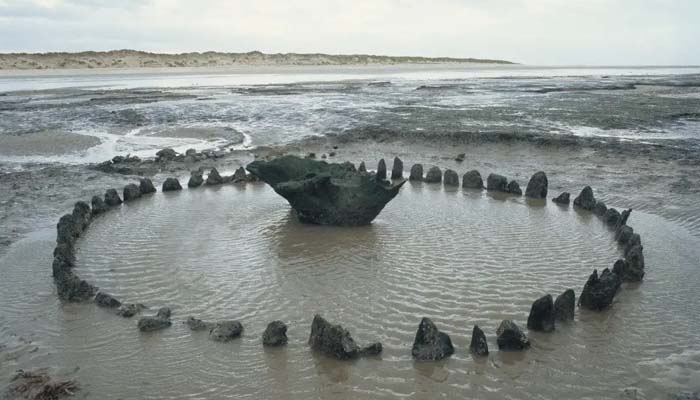
The researchers have finally uncovered the truth behind the 4,000-year-old mysterious Seahenge.
According to Independent, a new study has found that the Bronze Age structure on a beach in Norfolk, England, was built after the extreme climate degradation at the end of the third millennium BC.
Seahenge consists of an upside-down tree stump surrounded by 55 closely fitted oak pots. It was originally built on the salt marsh away from the coast.
Researchers suggested that the strange structure was built in 2049 BC using timber.
Different theories have been associated with the mysterious Seahenge. However, the recent study revealed that the adjacent circle might be constructed during the extreme cold time as a ritual to extend summer.
Archaeologist David Nance from the University of Aberdeen said, “Dating of Seahenge timbers showed they were felled in spring, and it was considered most probable that these timbers were aligned with sunrise on the summer solstice.”
He further added, “We know that the period in which they were constructed 4,000 years ago was a prolonged period of decreased atmospheric temperatures and severe winters and late springs, placing these early coastal societies under stress.”
Dr Nance explained, “Summer solstice was the date when, according to folklore, the cuckoo, symbolising fertility, traditionally stopped singing, returned to the Otherworld, and the summer went with it.”
He noted, “Evidence suggests that they were ritually sacrificed every eight years at Samhain (now Halloween), coincident with the eight-year cycle of Venus. Both monuments are best explained as having different functions and associated rituals but with a common intent: to end the severely cold weather.”















